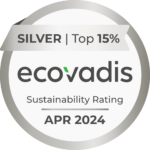To complement Jamie’s post on buyer personas and their importance in marketing automation, let’s focus on knowing your target market and their user intent in search marketing.
Identifying user intent is nothing new to search marketers; however, it can be overlooked. As a result, opportunities are missed. Hopefully, after reading this blog post, you are able to better understand how to identify the different stages of user intent and develop quality, authoritative and relevant content around those different stages.
Start with what you know best
It’s important to first know exactly what it is your company offers. What makes you unique and more appealing than your competitors? Whether it be a product or service you offer, it is meant to help solve a problem or fulfill a need. Next, what are some keywords and phrases your target market would use in a search query to find your solution? It may help to ask people in your target market what some of their pain points are as you go through this process. What are they currently using as a solution? Do they like the product or service? Why or why not? This base layer of knowledge can help put you ahead of the competition, especially when developing your content and SEO.
Remember, it’s important to ensure that your content readability is as high quality as possible. After all, you’re supposed to be providing a solution! You don’t want to scare potential customers away by prolonging their search process.
Identifying user intent
For our clients and their customer base, there are several different levels of user intent when searches are conducted online. Is the searcher in the discovery stage, consideration stage or possibly the purchase stage? Identifying the different stages of user intent and the words used in each stage’s search will help with your SEO and other digital strategies. Here are a few examples of different user intent searches:
- “high performance thermoplastic elastomer” – this searcher is in the discovery stage, looking to fulfill a need of a thermoplastic elastomer that is high performing.
- “what is the price difference between polymax and pebax elastomers” – this searcher has narrowed down their product selection and is in the consideration stage. There is still some discretion though, and a price comparison of the two products will most likely determine which is purchased. Make sure that on the product page, information is clearly provided and a strong call-to-action is made. Guide the buyer along to perform an action such as “Call a sales professional for a free quote” or “Download our product PDF.”
- “buy pebax tpe resins” – this lead is far along in the sales funnel and ready to make a purchase. Having the right landing page with relevant content will help convert this searcher into a customer. Again, providing the searcher with a call-to-action will help seal the deal. Remember, your goal is to make the buying process as streamlined as possible.
What’s next?
It’s important to identify how people are searching for your product or service, but it’s even more important to provide content to each of the different stages of user intent. Focus on different keywords and call-to-actions that satisfy the different stages in the sales funnel. Doing so will improve your visibility and help position you as an industry thought leader, not just in the selling of the product or service, but providing answers all the way up to the purchase stage. Having answers to all types of questions also helps build trust between you and the buyer. The more answers you are able to provide, the more validated you become.
Conclusion
Remember that your target market may not always be ready to make a purchase from you on their first, second or even seventh search. Especially in the B2B world. That is why it’s crucial to develop a user intent strategy to find customers early on in the search cycle, the middle of the search cycle and nurture them through to the purchase stage. Know your product or service and know your target market and their levels of intent. Next, capitalize by creating relevant and engaging content that will be the best solution to their need. Neglecting even one level of user intent could mean missing out on phenomenal business and creating loyal customers.





1 Comment
Knowing your target market and their search intent is a huge part of your SEO success!